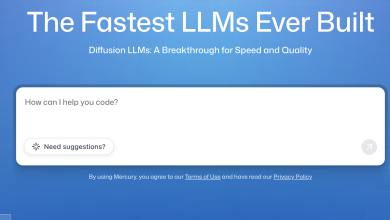
At just 24, Jafar Orujov had already joined the rare ranks of SaaS sellers closing multimillion-dollar enterprise deals, earning recognition as one of the top performers in EMEA with more than $5 million in ARR under his belt. But Orujov’s career has never been just about hitting quota. As the creator of CognismGPT, he has been at the forefront of applying AI to enterprise prospecting, discovery, and deal execution, reshaping what sales performance looks like in practice. Now moving deeper into advisory and thought leadership, he is helping companies navigate the fast-evolving intersection of human judgment and AI systems.
In conversation with AI Journal, Orujov explains why AI won’t replace top sellers, how the definition of sales excellence is shifting, and what skills will matter most in the next era of SaaS growth.
You were recognised as one of the top SaaS sellers in EMEA and closed over $5M in ARR by the age of 24. From that perspective, what do you think people most misunderstand about AI’s role in enterprise sales, especially the fear that it will replace high-performing sellers?
There’s a persistent myth that AI will replace top performers, but it won’t. AI isn’t a closer; it’s a lever, a compounding force, like having ten PhD interns in your pocket. What AI will replace is administrative work. What it cannot replace is judgment. The sellers who lose are those who delegate their thinking to AI. The ones who win are the operators who own the number and the architects who design the system and context. My rule is simple: AI won’t beat a top seller, but a top seller with AI will beat you.
Here’s what AI still can’t do, and why that matters. It can’t diagnose political risk in a room where half the stakeholders are silent. It can’t reframe a problem live when a CFO challenges your math. And it certainly can’t rebuild trust after a tough pricing conversation. That’s the human work. AI’s job is to give you unfair prep, faster loops, and clean execution so you’re ready for those moments.
Having combined quota-crushing performance with building innovative go-to-market systems, how do you see AI redefining what sales excellence looks like in SaaS organizations?
Old excellence was defined by high activity and good instincts. New excellence is about systems thinking, speed-to-insight, and repeatability. Today, what “great” looks like has shifted. Same-day follow-up is non-negotiable. It means minutes, not days. Pre-call briefs are always ready, covering company narrative, triggers, and likely objections. Message architecture must scale across channels without sounding robotic. Pipeline hygiene is tight: notes, next steps, and forecasts are always current because the system handles the grunt work.
Top performers don’t achieve more by doing random work. They run better loops, research, message, meeting, insight, and deal motion. All of this happens in less time, with a higher signal per touch.
As the creator of CognismGPT, which redefined enterprise prospecting and deal execution, where do you think AI adds the most value across the sales cycle of prospecting, discovery, or closing?
Prospecting provides the largest time delta. Automated research, account tiering, and pattern-interrupt messaging save hours and create space for deeper selling. Discovery carries the largest revenue delta, with dynamic question paths, risk-mapping, and instant summarisation being the areas where deals are truly won or lost. Closing has the highest quality delta, with AI supporting mutual action plans, stakeholder maps, ROI narratives, and red-flag detection from notes and emails.
If I had to prioritise, I would start with prospecting to free time, then invest that reclaimed time into more profound discovery. That creates the compounding flywheel.
You’ve proven that blending human creativity with AI-driven workflows can elevate enterprise sales. What performance benchmarks or KPIs are shifting as a result of this synergy?
The scoreboard is shifting away from raw volume toward quality, speed, and coverage. Time-to-insight per account or meeting now means preparation in minutes, not hours. Follow-up service-level agreements require same-day responses as table stakes. Personalisation is measured by the depth of signals used, not just token insertion. Multi-threading breadth is tracked by the number of functions engaged by stage. Stage velocity and forecast accuracy improve because clean notes lead to a cleaner pipeline.
Finally, research and administrative time as a percentage of the week is shrinking without hurting win rates. Track these and you’ll see why “do more” is dead. The new advantage is to do smarter, faster, and cleaner.
Your career highlights the importance of balancing execution with innovation. How can SaaS companies ensure AI tools deliver efficiency without losing the human trust and empathy needed in complex B2B transactions?
The key is to adopt a human-in-command model. AI drafts; the rep decides. Sales teams must maintain voice control, using brand and seller tone libraries to avoid sounding synthetic. Explainability is essential, and reps should know which signals shaped their outreach so they can defend their points. Guardrails such as verified data sources, compliance checks, and red-flag prompts like “Is this assumption defensible?” help keep outputs trustworthy.
Ultimately, live presence matters more than canned lines. AI prepares you, but you earn trust in the room. Efficiency is the by-product; credibility is the product.
Given your expertise in outbound innovation and GTM strategy, what new skills should sales professionals prioritize to thrive in an AI-augmented selling environment?
Sales professionals should focus on systems thinking to design repeatable workflows rather than one-off hacks. Operational prompting is critical, defined as the ability to turn messy objectives into clear instructions for tools. Data literacy helps sellers read signals, question sources, and sanity-check outputs. Synthesis writing enables them to compress complex inputs into crisp, executive-ready outcomes.
Alongside these technical skills, commercial acumen remains vital, including unit economics, value mapping, and ROI storytelling. Emotional intelligence and facilitation are just as important for multi-threading, building consensus, and handling high-pressure moments in the room. Finally, change enablement, the ability to help customers adopt what you sell, is a critical skill in the post-sale stage.
With your advisory work, you’ve seen both the benefits and pitfalls of AI in enterprise sales. What do you see as the most significant risks of over-reliance on AI, and how can organizations mitigate them?
The risks are real. Hallucinated confidence can lead to outputs that are wrong but well-written. Messaging can become commoditised, with everyone sounding the same. Skills can atrophy if reps stop thinking critically. Privacy and compliance can drift when data governance gaps are overlooked. Automation debt builds up as stacks become fragile.
To mitigate these risks, organisations should implement human review gates at key moments such as discovery summaries, proposals, and mutual action plans. Source transparency labels should be embedded inside workflows. Voice filters should keep outputs aligned with both brand and persona. Testing should occur at the system level—prompt, data, and channel—not just at the messaging line. Finally, deliberate “manual reps” during training ensure sellers maintain their skills and don’t lose the muscles that make them effective.
As you shift more into advisory and thought leadership roles, how do you envision AI and human sellers working together to redefine top performance standards in SaaS over the next five years?
We’ll move from “copilots” to orchestrated micro-agents across the deal cycle → research, meeting prep, objection handling, MAP management, all led by the seller.
The admin layer disappears; the CRM becomes an OS that writes itself.
Ramp time compresses. Coverage expands. Fewer reps produce more revenue, not by spamming more, but by nailing the critical moments with better judgment.
The new elite seller is a decision athlete with an AI exoskeleton: faster loops, cleaner execution, and sharper business judgment, without losing the human edge that wins complex enterprise deals.



